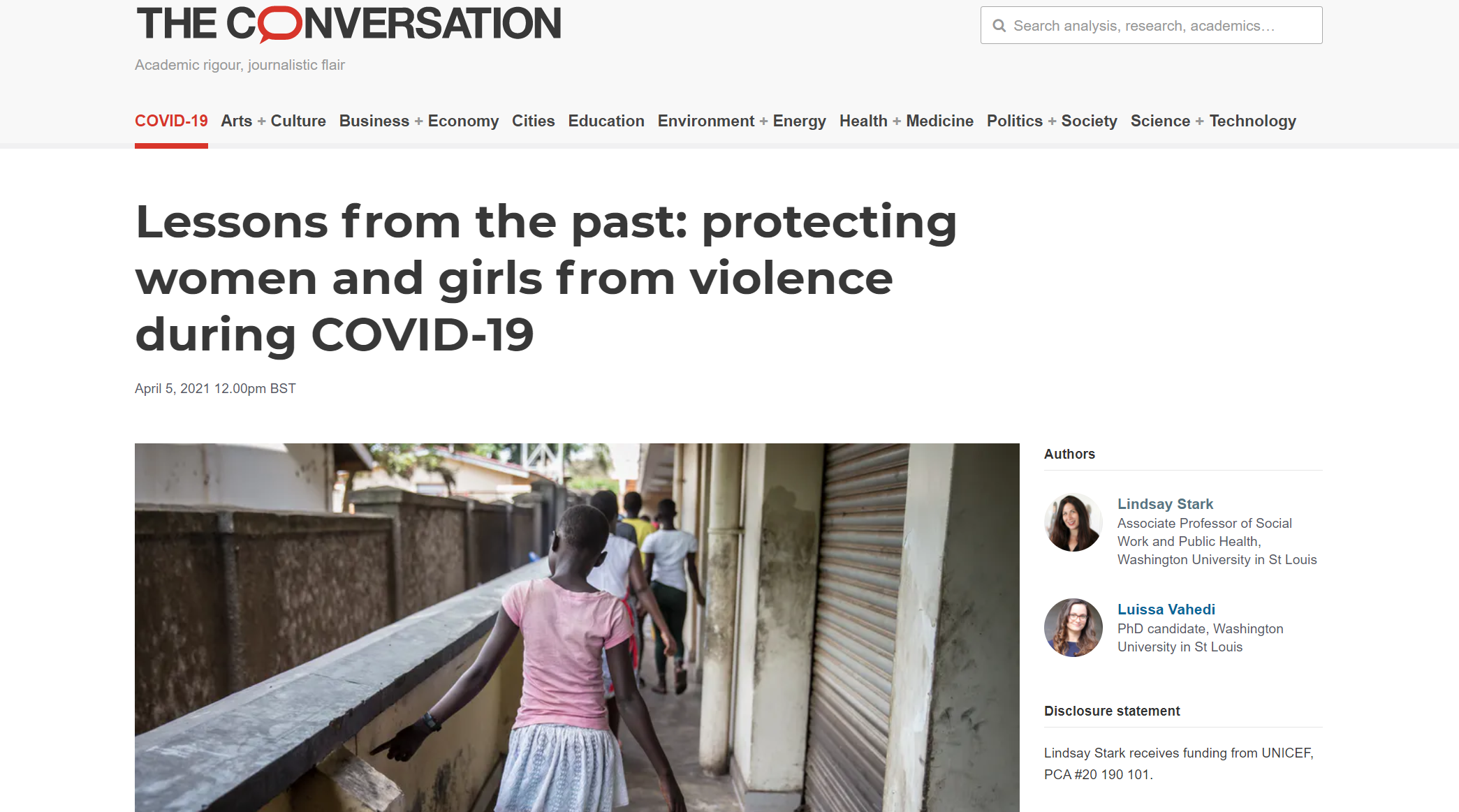COVID-19 has impacted women and girls around the globe in adverse ways. However, little attention has been paid to women and girls in humanitarian settings, those whose safety has already been reduced due to conflict, natural disaster or displacement. For these women and girls, COVID-19 has made them particularly vulnerable to increases in gender-based violence.
This is not the first time we have seen an infectious disease event lead to higher levels of gender-based violence. A similar increase was seen in the 2018 to 2020 Ebola outbreak in the Democratic Republic of the Congo (DRC). Communities reported that there were increased incidences of sexual and physical violence, sexual exploitation and abuse.
In a recent paper we examined how the response to the Ebola epidemic failed to protect women and girls from violence. We hope that our analysis provides insights into how we can do better during the COVID-19 pandemic.
We use a term coined by medical anthropologists – “syndemic” – to explore the connection between two public health concerns: violence and infectious disease. A syndemic describes the negative interaction between diseases or epidemics, which are worsened by social inequalities like poverty, stigma, stress, and structural violence.
So how can policy makers and researchers address rising violence against women and girls during the COVID-19 pandemic?
In our paper, we argue that policy-makers and practitioners must heed lessons from the Ebola outbreak in the DRC. They must mitigate against further exacerbation of gender-based violence. They must also improve support for survivors during infectious disease outbreaks, epidemics and pandemics.
Stark L and Vahedi L (2021) Lessons from the past: protecting women and girls from violence during COVID-19, The Conversation






